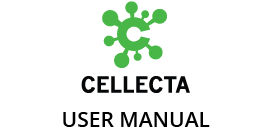The HIV-based lentivector system is designed to maximize its biosafety features, which include:
- A deletion in the enhancer of the U3 region of 3’ΔLTR ensures self-inactivation of the lentiviral construct after transduction and integration into genomic DNA of the target cells.
- The tat-transactivator domain has been removed from the upstream 5’-LTR in the lentivector to disable transcription from the 5’-LTR.
- The three proteins (gag, pol, env) are necessary for replication and packaging of the lentiviral vector. When packaging lentiviral particles, the genes encoding these three packaging proteins are separately introduced and expressed in the packaging cells using separate ordinary plasmids that lack packaging signals and share no significant homology to the lentivector. As a result, none of the HIV-1 genes (gag, pol, env) will be present in the packaged lentiviral genome.
- None of the HIV-1 genes (gag, pol, env) will be present in the packaged lentiviral genome, as they are expressed from packaging plasmids lacking packaging signal—therefore, the lentiviral particles generated are replication-incompetent.
- Lentiviral particles will carry only a copy of your expression construct.
Despite the above safety features, use of replication-incompetent lentiviral particles falls within NIH Biosafety Level 2 criteria. For a description of laboratory biosafety level criteria, consult the Centers for Disease Control Office of Health and Safety Web site at:
It is also important to check with the health and safety guidelines at your institution regarding the use of lentiviruses and follow standard microbiological practices, which include:
- Wear gloves and lab coat at all times when conducting the procedure.
- Always work with lentiviral particles in a Class II laminar flow hood.
- All procedures are performed carefully to minimize the creation of splashes or aerosols.
- Work surfaces are decontaminated at least once a day and after any spill of viable material.
- All cultures, stocks, and other regulated wastes are decontaminated before disposal by an approved decontamination method such as autoclaving. Materials to be decontaminated outside of the immediate laboratory area are to be placed in a durable, leakproof, properly marked (biohazard, infectious waste) container and sealed for transportation from the laboratory.
Last modified:
19 September 2024
Need more help with this?
Contact Us

